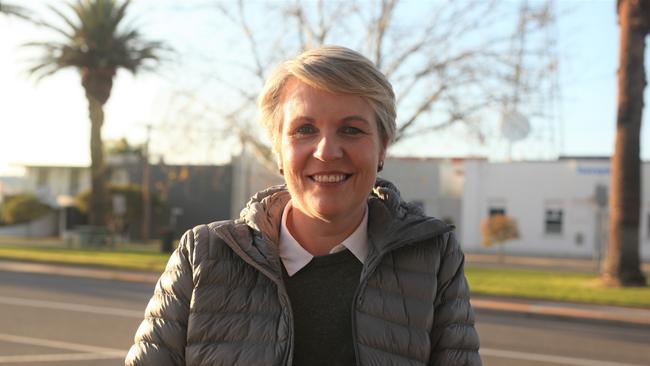Climate change threat is ‘a story of crisis’
Australia’s economy and wellbeing face unprecedented threats from climate change and extreme weather, with a new government report labelling the nation’s environment as ‘poor and deteriorating’.

Australia’s economy and wellbeing face unprecedented threats from climate change and extreme weather, with a new government report labelling the nation’s environment as “poor and deteriorating”.
The five-yearly State of the Environment report released on Tuesday warns that increasing pressures from climate change, habitat loss, feral animals, pollution and mining will accelerate the destruction of ecosystems and native species.
Environment Minister Tanya Plibersek said the “shocking” report, which was received by her predecessor, Sussan Ley, late last year but not released, revealed a “story of crisis and decline in Australia’s environment”.
A 274-page overview of the report, which for the first time includes chapters on extreme events and Indigenous impacts, outlines the social, environmental and economic pressures of warmer temperatures, higher emissions, poor land and water management, invasive species and rising sea levels.
Industries at risk of economic harm include the tourism, agriculture, fisheries and recreation sectors.
The report says Australia’s climate has warmed “by a mean of 1.4C on land and 1.1C in the oceans”, with most of the temperature increases occurring since the 1950s and in the past five years.
It identifies the low-lying Torres Strait Islands and Kakadu wetlands as highly vulnerable to rising sea levels, which have risen faster than the global average of 3-3.5mm a year, and warned that mangrove encroachment would drive further loss of saltmarsh.
The environment report card, which fails to meet key targets, will be tabled in parliament ahead of Ms Plibsersek outlining the federal government’s response at the National Press Club on Tuesday.
Ms Plibsersek said the report, which comprises more than 2000 pages, exposes a “decade of government inaction and wilful ignorance”.
“I look forward to outlining the report and our government’s plans. I won’t be putting my head in the sand – under Labor, the environment is back on the priority list. Now is the time to read this report and take action,” Ms Plibersek said.
Lead authors, former CSIRO research director Ian Cresswell, University of Sydney deputy vice-chancellor Emma Johnston and Indigenous cultural expert Terri Janke, said climate change, land-use change, habitat degradation and invasive species were “becoming more intense”.
“We find stronger evidence that the interactions between pressures are resulting in cumulative impacts, amplifying the threats faced by the Australian environment. Improvements in the management of our natural capital is required to support Australia’s economy and wellbeing in the longer term,” they said.
The report, which was compiled by 37 authors including 13 Indigenous experts, calls for immediate global action to reduce carbon emissions, greater Indigenous engagement, more co-ordinated data and holistic legislation.
Greens environment spokeswoman Sarah Hanson-Young said Labor should “stop approving projects that destroy critical habitat and insert a climate trigger into our environment laws”.
Increased bushfire, drought, heatwave and flooding activity are identified as threats, with greenhouse gas-fuelled ocean acidification putting the Great Barrier Reef at risk.
“Conditions on the inner‑central Great Barrier Reef are approaching a tipping point, forecast to cause a decline in coral juveniles and increased macroalgal cover,” the report says.
While pressures from sea-level rise are currently low, the report says the “situation is deteriorating”.
Waterways, beaches and shorelines are considered to be in “poor condition in areas near urban centres due to coastal development and climate change”.
The report says the destruction of Indigenous heritage is “occurring at an unacceptable rate against the wishes of traditional custodians” and that access to clean healthy drinking water for Indigenous communities is below standard.
With Australia boasting one of the highest global rates of species decline, the number of new species “listed in a higher category of threat has grown by 8 per cent since 2016 and will increase substantially in coming years because of the 2019–20 bushfires”.




To join the conversation, please log in. Don't have an account? Register
Join the conversation, you are commenting as Logout